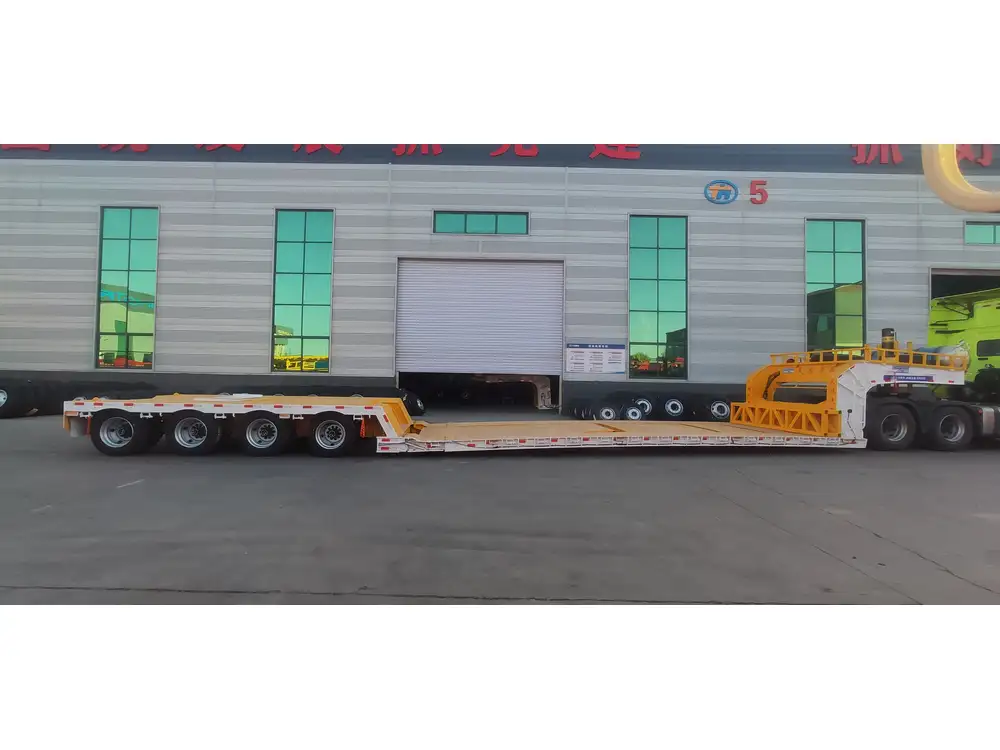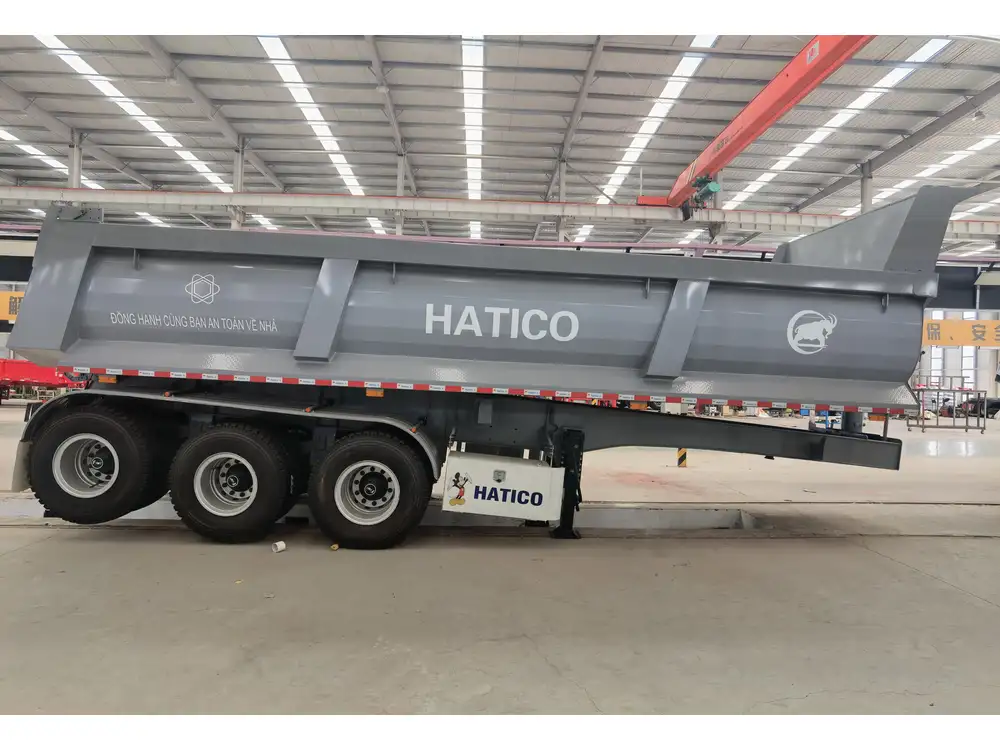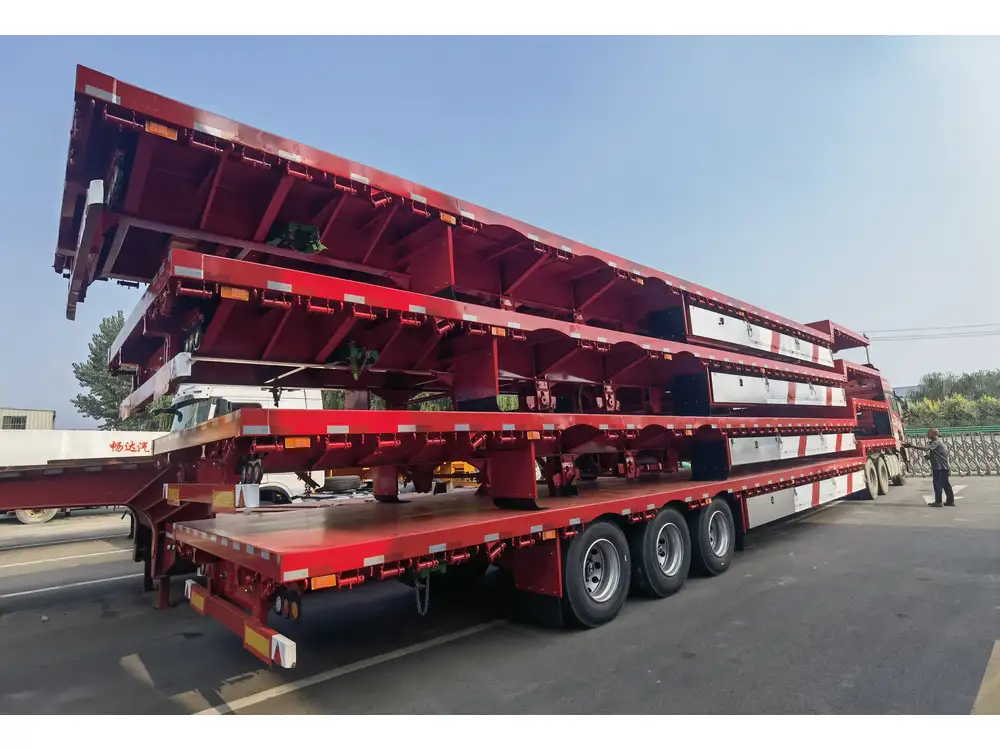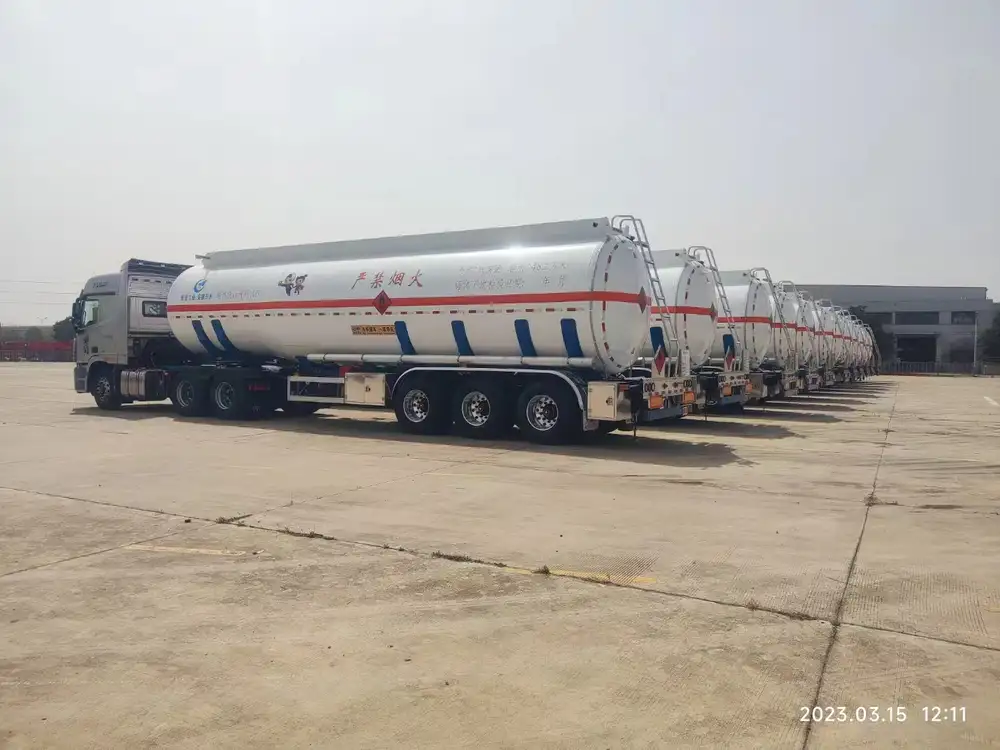When it comes to logistics, the semi-trailer serves as a backbone for transporting goods across long distances. A crucial metric in this area is the weight of an empty semi-trailer. Here, we delve into the intricacies of semi-trailer weight, its implications for logistics and transportation, and the regulatory aspects that govern it.
What is the Average Weight of Empty Semi-Trailers?
The weight of an empty semi-trailer can vary widely based on several factors, including the type of trailer, materials used in construction, and the specific design features. On average, an empty semi-trailer weighs between 10,000 to 15,000 pounds (4,500 to 6,800 kg). Below is a breakdown highlighting different types of trailers and their respective weights.
| Trailer Type | Average Weight (lbs) | Average Weight (kg) |
|---|---|---|
| Flatbed | 10,000 – 12,000 | 4,500 – 5,400 |
| Dry Van | 11,000 – 15,000 | 5,000 – 6,800 |
| Refrigerated (Refer) | 12,000 – 16,000 | 5,400 – 7,300 |
| Tanker | 15,000 – 20,000 | 6,800 – 9,100 |
| Specialty Trailers | 10,000 – 14,000 | 4,500 – 6,350 |
Factors Influencing Weight
Construction Material
The materials used in constructing the trailer significantly influence the overall weight. For example, aluminum trailers are lighter than steel ones while offering similar strength, making them a preferred choice for weight-sensitive cargo.Trailer Design
Specialty designs, such as those that include additional features like insulation (for refrigerated trailers), increase weight. Conversely, a minimalist flatbed design tends to be lighter.Size and Capacity
The dimension of the trailer can affect weight considerably. Longer or wider trailers typically have added material, thus weighing more.Equipment and Add-Ons
Trailers equipped with additional tools like lift gates or winches tend to weigh more than base models without these features.

Importance of Knowing the Weight of Empty Semi-Trailers
Awareness of an empty semi-trailer’s weight plays a pivotal role in various operational arenas:
1. Compliance with Regulatory Standards
Regulatory bodies impose weight limits on commercial transport vehicles, typically referred to as the Gross Vehicle Weight Rating (GVWR). This rating includes the combined weight of the trailer and its cargo. Knowing the empty trailer weight allows operators to adhere to legal stipulations, avoiding costly fines and ensuring road safety.
2. Fleet Management and Cost Efficiency
Logistics companies rely on precise weight knowledge to enhance their fleet’s efficiency. Accurately knowing how much an empty semi-trailer weighs helps in:
- Fuel Planning: The lighter the load, the less fuel consumed, which leads to lower operational costs.
- Load Optimization: Understanding the weight allows managers to calculate how much cargo can be safely loaded, maximizing delivery efficiency while maintaining safety standards.

3. Safety Considerations
Overloading a trailer poses grave risks, potentially leading to accidents, vehicle damage, or cargo losses. Knowledge of the empty weight aids in making informed decisions about load distribution and overall safety, substantially reducing the likelihood of incidents on the road.
Calculating the Weight of Your Semi-Trailer
To determine the weight of a semi-trailer without relying solely on manufacturer specifications, operators can employ various methods:
1. Weighbridge Weighing
One of the most accurate ways to ascertain the weight of an empty semi-trailer is through a weighbridge. Weighbridges are often found at truck stops or logistics centers, enabling drivers to weigh their vehicles and confirm compliance with regulations.

2. Portable Scales
For fleet managers running multiple trucks, investing in portable truck scales can offer a convenient alternative to weighbridges. These scales allow for on-the-go weighing and are often digital, providing immediate feedback on weight distribution.
3. Manufacturer Specifications
Most manufacturers provide detailed specifications, including the empty weight of their semi-trailer models. It is advisable to consult the manufacturer’s manual for precise weights, as this data can assist in compliance and operational planning.
Implications of Overloading a Semi-Trailer
Exceeding the weight limit of a semi-trailer can lead to various significant consequences:
Increased Wear and Tear on Equipment
Heavy loads strain the trailer’s structure and axles, leading to faster deterioration and increased maintenance costs.Legal Liabilities
Overloaded semi-trailers face regulatory penalties that can include fines, load rejections, or towing. Offending companies could even face lawsuits if overloaded vehicles cause collisions.Insurance Complications
Cargo insurance policies often include stipulations about maximum weight limits. Overloading can void these coverage agreements, resulting in financial losses if an incident occurs.

Best Practices for Managing Semi-Trailer Weight
To ensure optimal operation and compliance, transportation companies should implement a series of best practices:
1. Regular Maintenance and Inspection
Scheduled Inspections: Frequent inspections can identify potential issues before they result in major problems. This includes checking tire pressures, brake efficiency, and structural integrity.
Maintenance Records: Keep comprehensive records of all maintenance activities, ensuring that any issues related to weight can be traced and documented.
2. Training for Drivers and Staff
Weight Compliance Training: Educate drivers about weight regulations, methods for weight management, and the importance of precise loading practices.
Load Distribution Awareness: Training should also cover how to distribute loads evenly across the trailer to maintain stability and safety during transport.

3. Use of Technology
Telematics Systems: Modern telematics can provide real-time data on the weight and distribution of loads, enabling immediate adjustments as necessary.
Weight Monitoring Devices: Advanced weight monitoring systems integrated into trailers can alert operators if they are approaching weight limits, thus preventing overstressing of the vehicle.
Exploring Semi-Trailer Variations and Their Weights
In a landscape enriched with diverse trailer options, understanding the specific weights can guide optimal selection for logistics needs. Here’s a closer look at varying types of trailers beyond just general averages.
Refrigerated Trailers (Reefer Trailers)
As mentioned, the average empty weight ranges from 12,000 to 16,000 pounds (5,400 to 7,300 kg). The additional insulation, refrigeration units, and robust build create a heavier structure. The temperature-controlled environment is crucial for transporting perishables, yet it weighs significantly more than standard trailers.

Tanker Trailers
Designed for transporting liquids, these trailers typically weigh between 15,000 to 20,000 pounds (6,800 to 9,100 kg). The reinforced materials and plumbing features needed to safely store and manage various liquids make them heavier. Operators must pay particular attention to stability due to the dynamic nature of liquid loads.
Flatbed Trailers
Flatbeds average around 10,000 to 12,000 pounds (4,500 to 5,400 kg) and are preferred for hauling oversized goods that don’t require enclosed transport. Their simplistic design allows for ease of loading and unloading but does require meticulous attention to load securing.
Specialized Trailers
This category includes various custom-designed trailers that serve specific applications, from car haulers to multi-level transporters. Weights can vary but generally fall in the range of 10,000 to 14,000 pounds (4,500 to 6,350 kg). These unique designs demand careful assessment during operation to optimize safety.

Conclusion
Understanding the weight of an empty semi-trailer is not merely a factor of curiosity; it is a key to operational economy, compliance, and safety in an industry that thrives on precision. By educating oneself on the nuances of trailer weights, adhering to best practices, and utilizing modern technology, logistics operators can enhance their efficiency and safeguard their investment.
Arming oneself with this knowledge serves to streamline operations while maximizing safety and compliance within a framework that is increasingly complex. Whether through regular weighing, outfitting fleets with the latest technology, or diligently training drivers, each measure contributes to an overarching goal: a more efficient, compliant, and safer transport sector. By doing so, businesses position themselves not only for immediate success but also for sustained growth and viability in the competitive world of logistics.



